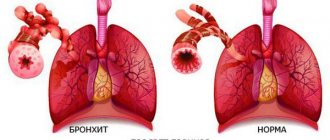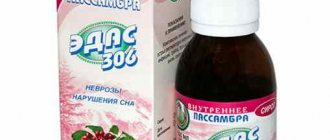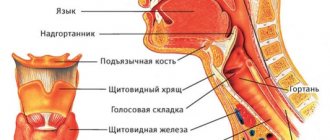Pharmacodynamics
From Orvirem®, which is a polymer compound of rimantadine with sodium alginate, the active substance is not released immediately, which causes a gradual release of rimantadine into the blood, its prolonged circulation in the body, a constant concentration of the drug in the blood, and a decrease in the toxic effect of rimantadine. Active against strains of influenza A virus. Has an antitoxic effect against ARVI and influenza caused by type B virus.
Orvirem® selectively interacts with the transmembrane viral protein M2, which functions as a proton pump. It prevents a decrease in the pH of endosomes, blocks the fusion of the virus shell with endosome membranes and thus prevents the transfer of viral genetic material into the cell cytoplasm. Inhibits the exit of viral particles from the cell, i.e. interrupts the transcription of the viral genome. Thus, it has a direct antiviral effect. Stabilizes the system of formation of sIgA (secretory immunoglobulin A), as the first level of protection, in the nasopharyngeal mucosa. Promotes the induction of interferon as a second level of protection. Orvirem® helps to normalize the subpopulation composition of immunocompetent cells and, accordingly, improves their functional activity and strengthens the cellular component of immunity. Has a detoxifying effect. Reduces the levels of pro-inflammatory cytokines IL-8 and TNF-α, reduces the antigenic load on immunocompetent cells, and quickly stops inflammatory reactions.
Orvirem syrup for children over 1 year 0.2% 100ml
A country
Russia
The country of production may vary depending on the batch of goods. Please check with the operator for detailed information when confirming your order.
Active substance
Rimantadine
Compound
The active substance is rimantadine hydrochloride.
pharmachologic effect
Rimantadine is an adamantane derivative; active against various strains of influenza A virus (especially type A2). Being a weak base, it acts by increasing the pH of endosomes, which have a membrane of vacuoles and surround viral particles after they penetrate the cell. Preventing acidification in these vacuoles blocks the fusion of the viral envelope with the endosome membrane, thereby preventing the transfer of viral genetic material into the cell cytoplasm. It also inhibits the exit of viral particles from the cell, i.e. interrupts the transcription of the viral genome. Prescribing the drug within 2-3 days before and 6-7 hours after the onset of clinical manifestations of influenza type A reduces the incidence, severity of symptoms of the disease and the degree of serological response. Some therapeutic effect may also occur if rimantadine is prescribed within 18 hours after the onset of the first symptoms of influenza. After oral administration, the active substance is almost completely absorbed from the intestine. Absorption is slow. Plasma protein binding is about 40%. Metabolized in the liver. T1/2 - 24-36 hours; 15% is excreted by the kidneys unchanged, 20% in the form of hydroxyl metabolites. In chronic renal failure, T1/2 increases by 2 times. In patients with renal failure and in elderly patients, toxic concentrations may accumulate if the dose is not adjusted in proportion to the decrease in creatinine clearance.
Indications for use
Prevention and early treatment of influenza A in children over 1 year of age. Prevention with rimantadine can be effective during contact with sick people at home, when the infection spreads in closed groups and at a high risk of developing the disease during an influenza epidemic.
Mode of application
During treatment, the drug is taken orally (after meals), washed down with water, according to the following scheme: for children from 1 to 3 years old - on the 1st day, 10 ml (2 teaspoons) of syrup (20 mg) 3 (daily dose - 60 mg); on the 2nd and 3rd days - 10 ml 2 (daily dose - 40 mg), on the 4th day - 10 ml 1 time / (daily dose - 20 mg); children from 3 to 7 years old - on the 1st day - 15 ml (3 teaspoons) of syrup (30 mg) 3 (daily dose - 90 mg); on the 2nd and 3rd days - 3 teaspoons 2 (daily dose - 60 mg), on the 4th day - 3 teaspoons 1 time / (daily dose - 30 mg). For prevention, the drug is prescribed: to children from 1 year to 3 years - 10 ml (2 teaspoons) of syrup (20 mg) 1 time; children from 3 to 7 years old - 15 ml (3 teaspoons) of syrup (30 mg) 1 time / for 10-15 days, depending on the source of infection. The daily dose of rimantadine should not exceed 5 mg/kg body weight.
Interaction
When taken simultaneously, adsorbents, astringents and enveloping agents reduce the absorption of rimantadine. Medicines that acidify urine (acetazolamide, sodium bicarbonate) increase the effectiveness of rimantadine due to a decrease in its excretion by the kidneys. When used together, acetylsalicylic acid and paracetamol reduce the Cmax value of rimantadine by 11% .Cimetidine reduces the clearance of rimantadine by 18%.
Side effect
The drug is usually well tolerated. The following adverse reactions are sometimes observed. From the digestive system: nausea, vomiting, epigastric pain, flatulence, anorexia. From the central nervous system: headache, dizziness, insomnia, neurological reactions, impaired concentration. Others: hyperbilirubinemia, allergic reactions (skin rash , itching, urticaria), asthenia.
Contraindications
Acute liver diseases; acute and chronic kidney diseases; thyrotoxicosis; pregnancy; lactation period; children under 1 year of age; hypersensitivity to the components of the drug. The drug should be prescribed with caution for epilepsy (including a history of epilepsy).
Overdose
No data.
special instructions
While taking the drug, exacerbation of chronic concomitant diseases is possible. With epilepsy, the risk of developing an epileptic seizure increases. The syrup contains 60% sucrose, which should be taken into account when prescribing the drug to patients with diabetes. The emergence of drug-resistant viruses is possible.
Dispensing conditions in pharmacies
On prescription
Directions for use and doses
Inside, after meals, with water, according to the following schemes:
Treatment regimen
| Age | Reception days | |||
| 1st | 2nd | 3rd | 4th | |
| 1–3 years | 2 teaspoons 3 times | 2 teaspoons 2 times | 2 teaspoons 2 times | 2 teaspoons 1 time |
| 3–7 years | 3 teaspoons 3 times | 3 teaspoons 2 times | 3 teaspoons 2 times | 3 teaspoons 1 time |
| 7–14 years | 4 teaspoons 3 times | 4 teaspoons 2 times | 4 teaspoons 2 times | 4 teaspoons 1 time |
Prophylactic scheme
| Age | Daily dose | Reception scheme | Admission deadline |
| 1–3 years | 2 teaspoons | 1 per day | 10–15 days |
| 3–7 years | 3 teaspoons | 1 per day | 10–15 days |
| 7–14 years | 4 teaspoons | 1 per day | 10–15 days |
1 teaspoon = 5 ml.
The maximum daily dose is 5 mg of rimantadine per 1 kg of body weight.
Efficiency
The criteria for assessing the preventive effectiveness of the tested drug was its ability to prevent disease during an outbreak of influenza or ARVI of another etiology in a team.
Preventive effectiveness was also judged by its effect on viral shedding in hospitalized children with influenza and by the frequency of development of nosocomial acute respiratory infections among them.
As a result of the studies, preventive effectiveness: excellent - 71.6%, satisfactory - 11.9%, unsatisfactory - 16.5%. Systematic administration of the drug to prevent influenza reduces the incidence of the disease by 4–5 times in organized groups.
The criteria for assessing the therapeutic effectiveness of the drug were the duration of the main clinical symptoms of the disease (temperature reaction, intoxication and catarrhal symptoms in the nasopharynx), the speed of disappearance of pathological changes in laboratory parameters, if any developed at the onset of the disease, the development or absence of complications, as well as certain adverse reactions in response to his introduction.
When treating influenza and acute respiratory viral infections, it reduces the time of manifestation of the main symptoms of the disease by 3.1–3.6 days. The duration of the temperature reaction, symptoms of intoxication, as well as catarrhal symptoms in the nasopharynx are significantly reduced. Peripheral blood counts normalize faster. Indicators of specific and nonspecific immunity improve.
In case of late treatment and relapses of the disease, the use of Orvirem® reduces the duration of the disease by 2 times and prevents the development of complications.
The drug has proven its safety:
— there were no significant changes in the dynamics of peripheral blood parameters in children of the compared groups;
— no pathological changes were detected in the urine;
— there is no increase in allergic mood in both children with high and normal levels of IgE in the blood serum, which confirms clinical data on the absence of any allergic reactions to its administration.
Orvirem
reg. No. Р N000044/01 0120.03.2008technical specification: 344353 Shelf life: 3 years
Pharmacological group:
Antiviral agents
Active substance:
Rimantadine
Until now, the prescription of antiviral drugs (rimantadine, etc.) was strictly limited by age due to the possibility of developing undesirable side effects. For the first time in world practice, employees of the Influenza Research Institute, together with other organizations of the Russian Academy of Medical Sciences, have developed a new antiviral drug based on the polymer form of rimantadine - Algirem, the pharmacological properties of which are significantly changed compared to rimantadine. Since March 2008, the drug has a new name - “Orvirem”.
The low molecular weight modified sodium alginate included in the drug has adsorbing and detoxification properties, which enhances its antitoxic activity. The circulation time of Algirem (Orvirem) in the blood plasma is tens of times higher than that of rimantadine, and the rate of diffusion into tissue is significantly reduced, which makes it possible to reduce the dosage of the drug, and, therefore, reduce the risk of undesirable effects and ensure good tolerability of its use.
Nosological classification (ICD-10)
J11 Influenza, virus not identified
Why do patients choose ORVIREM to treat influenza?
- Destroys influenza viruses, thereby affecting the cause of the disease
- Acts quickly and reliably
- Well tolerated by children
- ORVIREM can be used not only for treatment, but also for the prevention of influenza
The peculiarity of the drug is that rimantadine is fixed in a sodium alginate matrix. This allows Orvirem to ensure prolonged circulation of the drug with a decrease in its toxicity, since in this dosage form rimantadine is not released immediately, which results in a gradual and prolonged entry into the blood.
Pharmachologic effect:
Antiviral. Selectively interacts with the transmembrane viral protein M2, interfering with its functions as a proton pump. In this case, there is no decrease in the pH of endosomes (vacuoles with a membrane) that surround viral particles after they penetrate the cell. Prevention of the acidification process by rimantadine blocks the fusion of the viral envelope with endosome membranes, thus stopping. transfer of viral genetic material into the cytoplasm of the cell, preventing the exit of viral particles from the cell.
Pharmacokinetics:
After oral administration, it is almost completely absorbed from the intestines. 1.5-2 hours after taking the syrup at a dose of 5 mg/kg body weight, rimantadine appears in the blood plasma; after another 4 hours in the plasma (Tmax about 5.5 hours), Cmax is reached (0.6-1 μg/ml) , persisting for at least 6-8 hours. Metabolized to form 3 hydroxylated metabolites. It is excreted unchanged (about 25%) and in the form of metabolites mainly by the kidneys. May accumulate in toxic concentrations in people with renal impairment if dosage is not adjusted in proportion to the decrease in creatinine clearance. With normal renal function, T1/2 is approximately 25-30 hours.
Pharmacodynamics:
From Orvirem, which is a polymer compound of rimantadine with sodium alginate, the active substance is not released immediately, which causes a gradual release of rimantadine into the blood, prolonged circulation in the body, a constant concentration of the drug in the blood, and a decrease in the toxic effect of rimantadine. Active against strains of influenza A virus (especially type A2). Has an antitoxic effect against ARVI and influenza caused by type B virus.
Indications:
- Prevention and treatment of influenza and acute respiratory viral infections in children aged one to seven years.
Attention!!! Please note that the drug contains 60% sugar.




